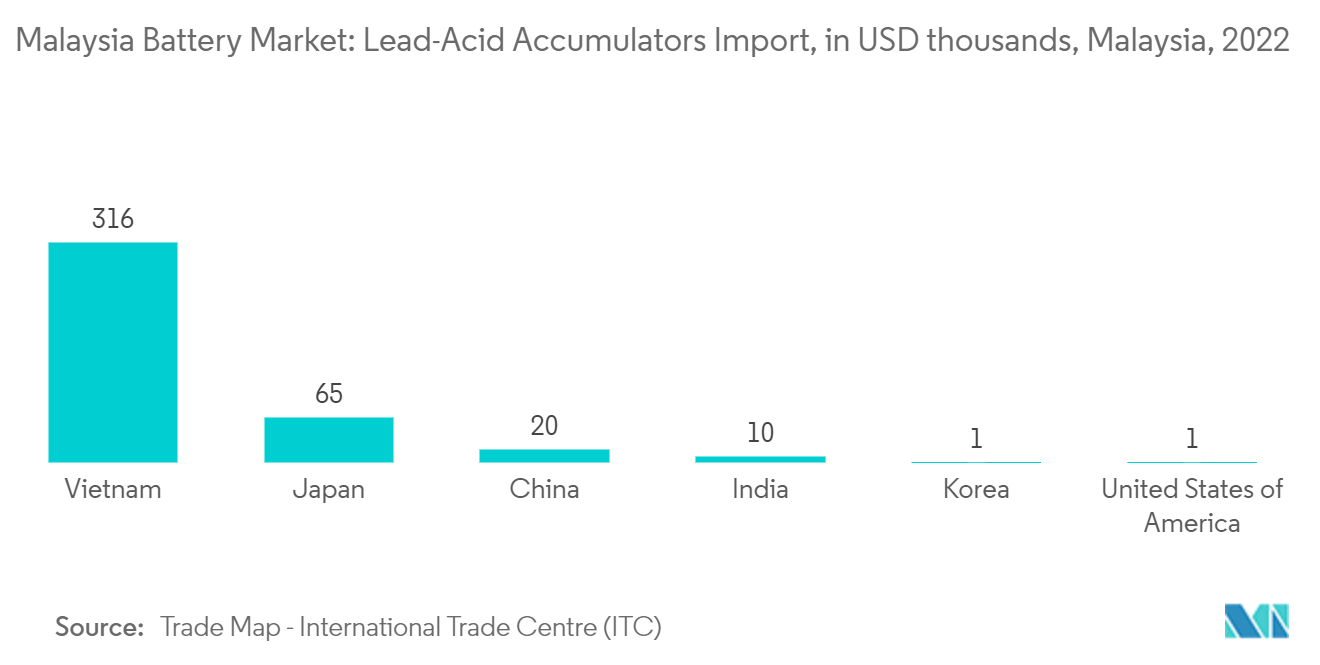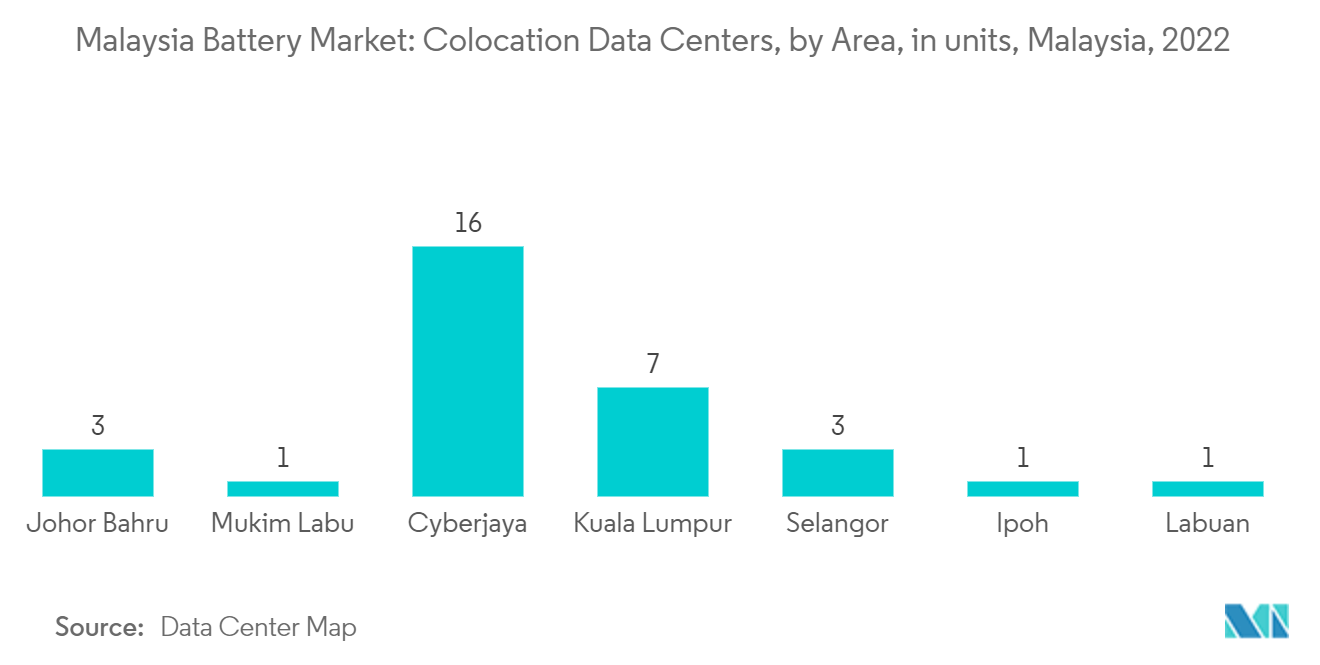Market Trends of Malaysia Battery Industry
Lead-Acid Battery Expected to Dominate the Market
- The energy-to-weight ratio of a lead-acid battery is low. However, it can supply large surge currents, indicating a high power-to-weight ratio primarily useful for SLI (Starting Lighting Ignition) applications. Also, lead-acid batteries are preferred when the price is more critical than the energy-to-weight ratio, as they are low-cost batteries. For example, they are selected in backup supplies for mobile phone towers, hospitals, and off-grid remote storage.
- Lead-acid batteries in automotive applications contribute to more than 60% of the market. Automotive (excluding electric vehicles) batteries are mostly SLI batteries. The lead-acid batteries can also be used for in-vehicle entertainment systems, power steering and locking, and power window systems.
- The demand for lead-acid batteries is increasing in Malaysia due to the increasing production and demand for automobiles. The rising demand from automotive and data centers is the primary reason for the increase in the imports of lead-acid batteries in the country. As of 2022, the imports of lead-acid accumulators (excluding spent and starter batteries) accounted for USD 799 thousand from different exporting countries like India, China, Japan, Singapore, etc.
- The most commonly used battery in a motorcycle is the 12V lead-acid battery. Some of Malaysia's preferred brands for the two-wheeler segment are GS Yuasa and Deka AGM Power Sport Batteries. Similarly, the demand for batteries has been growing for the four-wheeler segment, with the batteries from the Varta brand gaining popularity.
- On the other hand, the government's plans to increase the investment in the charging infrastructure and the policies promoting EV manufacturing facilities may increase the uptake of electric vehicles in Malaysia. This factor may create a significant opportunity for lead-acid and li-ion battery manufacturers operating in Malaysia in the long term.
- Therefore, increasing demand from the automotive sector and the plans to set up lead-acid battery manufacturing facilities in the country are expected to drive the lead-acid battery segment during the forecast period.

Increasing Demand from Data Centers Driving the Market Demand
- Malaysia is considered one of the prime locations for data centers in Asia-Pacific, with a robust telecommunications infrastructure and supportive government initiatives. With the abundant availability of resources and an increasing number of internet users, Malaysia may see significant growth in data centers in the coming years.
- With the emergence of 5G and artificial intelligence (AI) and machine learning (ML), new data center construction, deployment, and upgrading efforts in existing data centers are booming. Furthermore, the Malaysian data center market experienced steady growth, projected to continue over the next five years. The development has been strong from both local and international providers.
- As of 2022, 33 colocation data centers are from 8 areas in Malaysia (Malaysia). Additionally, in November 2022, Equinix, Inc. announced its entry into the Malaysian market with plans to develop JH1, a new International Business ExchangeTM (IBX®) data center in Johor. JH1 is expected to commence operations in Q1 2024, with an initial expenditure of around USD 40 million, and will provide 500 cabinets and 1,960 square meters of colocation space.
- The most common and noticeable lead-acid batteries used in data centers are the valve-regulated lead-acid (VRLA) cells. These often come from a vast cabinet of stacked batteries that can support uninterruptible power supply (ups) systems. The standard predicted life of a lead-acid battery is around ten years, while the actual service life is approximately three years. Consequently, lead-acid batteries need constant replacement, raising costs in new cells and admin time over the years. Additionally, lead-acid cells must be kept at around 20 degrees for maximum efficiency, requiring companies to spend massive amounts on air conditioning systems to keep them at optimal temperatures.
- Data centers have recently aimed to increase their power density, given their limitations on space and the need for more efficient operations. Compact lithium-ion batteries reduce the area an uninterrupted power supply system occupies by 50-80%. In addition, such batteries require less time for charging and feature a better self-discharge rate, which plays a significant role during frequent outages. With new solutions and technologies emerging over time, the cost of lithium-ion batteries may decrease further.
- Therefore, increasing demand for batteries for power backup applications in data centers and upcoming large-scale data centers in the country are expected to drive the battery market in Malaysia during the forecast period.

